I've searched for an answer to this question and found questions similar to my own, however I do not have a "ColumnHeader" column to denote which field the record should go into. Ex:
TSQL Pivot without aggregate function
trying to flatten rows into columns
Fetching Columns of a multiple rows in one row
My problem is thus - I have data in this format (selected as a top 3 result from a product recommendation query):
------------------------------
CustID | StyleNo | Brand | ID
------------------------------
1 | ABC | BrandA| 1
------------------------------
1 | DEF | BrandB| 2
------------------------------
1 | GHI | BrandC| 3
------------------------------
2 | JKL | BrandA| 4
------------------------------
2 | MNO | BrandB| 5
------------------------------
2 | PQR | BrandD| 6
------------------------------
That I'd like to make look like this:
-----------------------------------------------------------------
CustID | StyleNo1| StyleNo2| StyleNo3 | Brand1 | Brand2 | Brand3
-----------------------------------------------------------------
1 | ABC | DEF | GHI | BrandA | BrandB | BrandC
-----------------------------------------------------------------
2 | JKL | MNO | PQR | BrandA | BrandB | BrandD
-----------------------------------------------------------------
In order for my program to simply read the row of recommendations for each customer.
What I have attempted is a PIVOT - however I have nothing to really aggregate upon. I've also attempted the Min(Case...When...Then...End) as outlined in the second linked question, but as stated I don't have reference to a "Header" column.
The ID column is completely inconsequential for the time being, but it may help to solve this problem. It is NOT needed in the end result.
I am currently using SQLServer 2012

